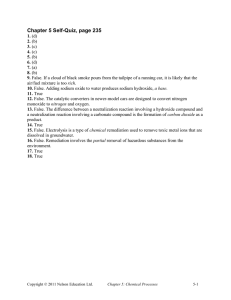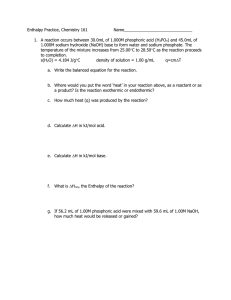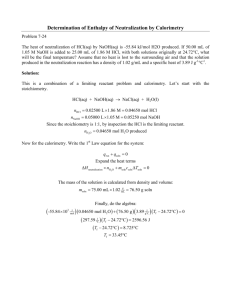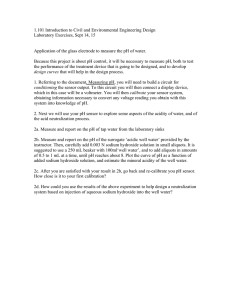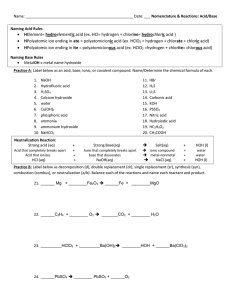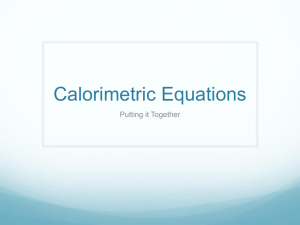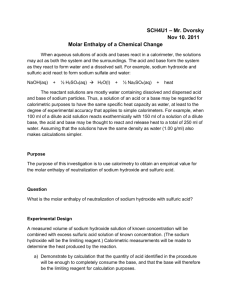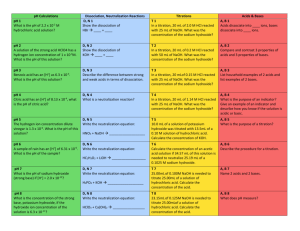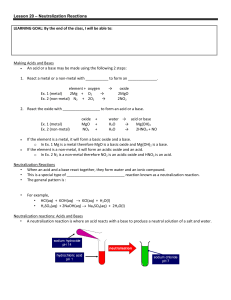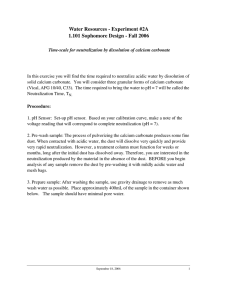Determining the Enthalpy of a Neutralization Reaction Work Sheet
advertisement
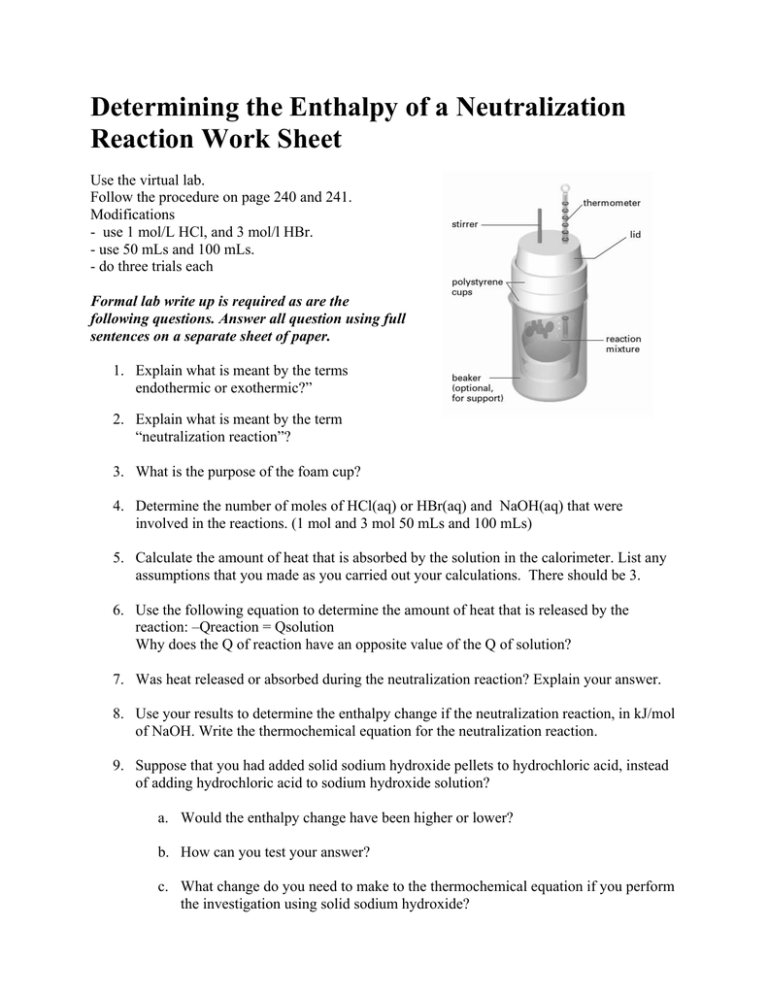
Determining the Enthalpy of a Neutralization Reaction Work Sheet Use the virtual lab. Follow the procedure on page 240 and 241. Modifications - use 1 mol/L HCl, and 3 mol/l HBr. - use 50 mLs and 100 mLs. - do three trials each Formal lab write up is required as are the following questions. Answer all question using full sentences on a separate sheet of paper. 1. Explain what is meant by the terms endothermic or exothermic?” 2. Explain what is meant by the term “neutralization reaction”? 3. What is the purpose of the foam cup? 4. Determine the number of moles of HCl(aq) or HBr(aq) and NaOH(aq) that were involved in the reactions. (1 mol and 3 mol 50 mLs and 100 mLs) 5. Calculate the amount of heat that is absorbed by the solution in the calorimeter. List any assumptions that you made as you carried out your calculations. There should be 3. 6. Use the following equation to determine the amount of heat that is released by the reaction: –Qreaction = Qsolution Why does the Q of reaction have an opposite value of the Q of solution? 7. Was heat released or absorbed during the neutralization reaction? Explain your answer. 8. Use your results to determine the enthalpy change if the neutralization reaction, in kJ/mol of NaOH. Write the thermochemical equation for the neutralization reaction. 9. Suppose that you had added solid sodium hydroxide pellets to hydrochloric acid, instead of adding hydrochloric acid to sodium hydroxide solution? a. Would the enthalpy change have been higher or lower? b. How can you test your answer? c. What change do you need to make to the thermochemical equation if you perform the investigation using solid sodium hydroxide?
